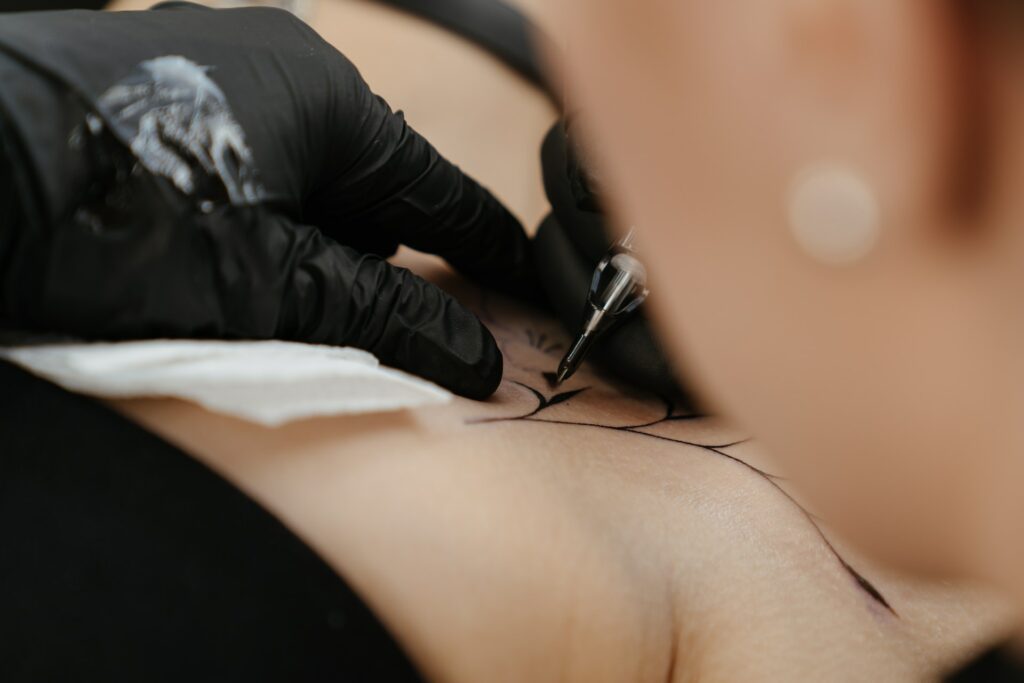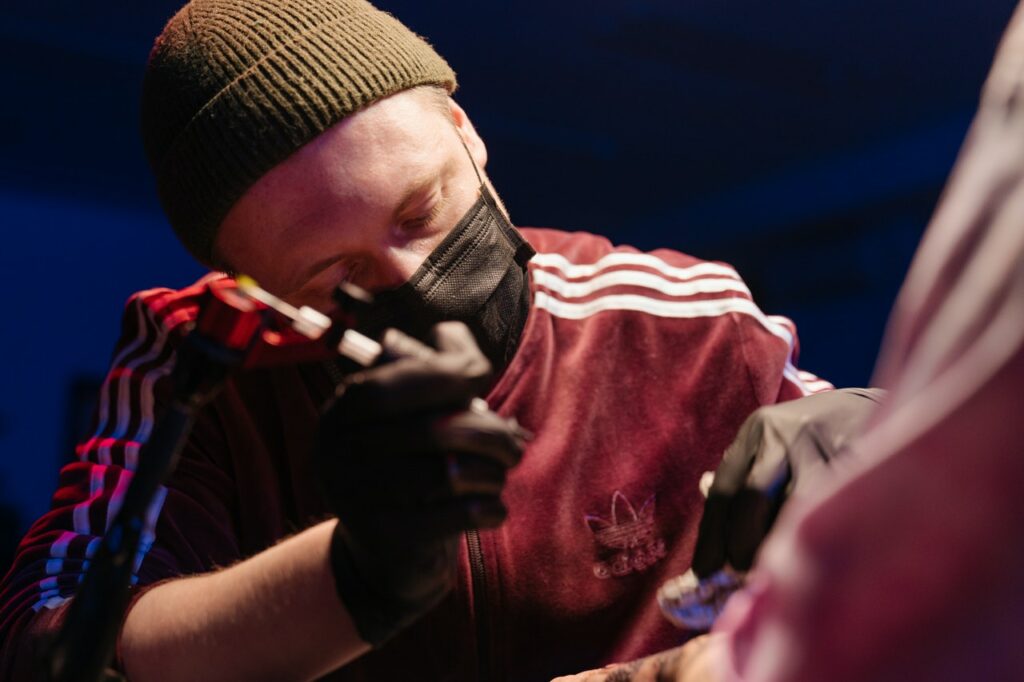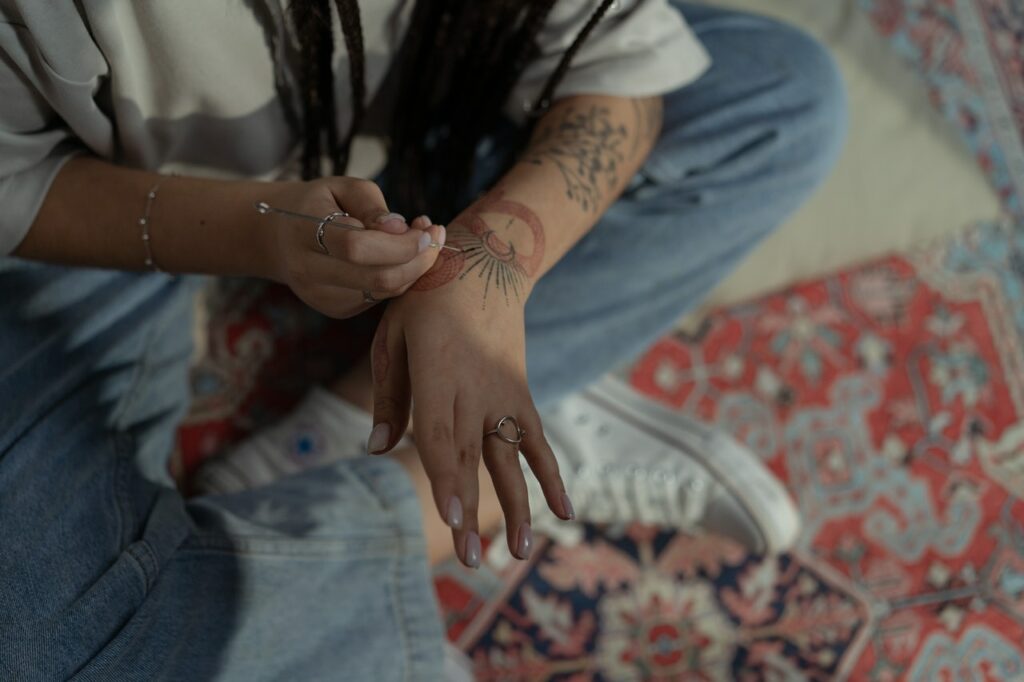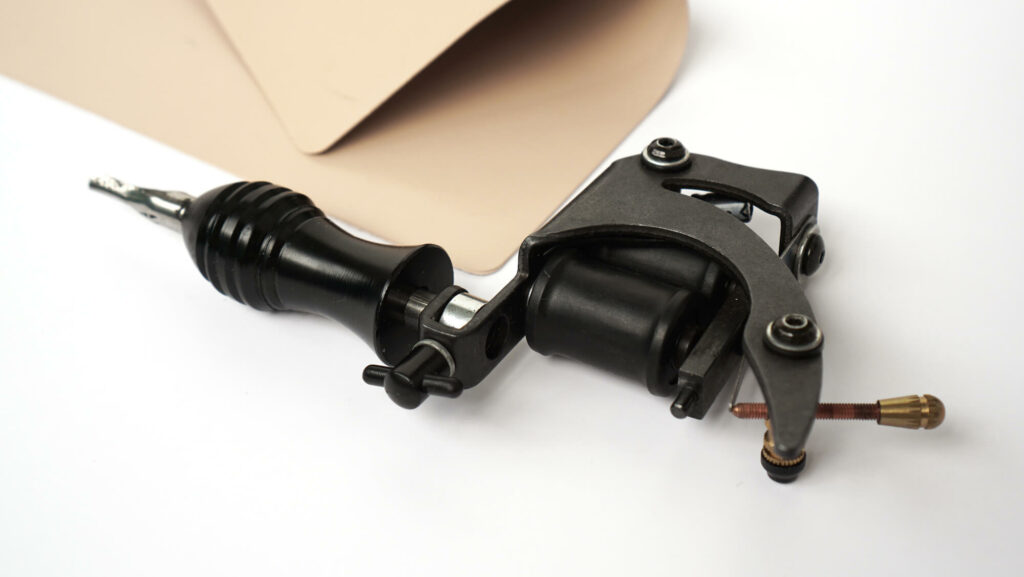Are you an aspiring tattoo artist with an interest in polishing your art? I know you’re wondering what practice skin alternatives are available to achieve precision before working on human skin.
Tattoo practice skin is meant to create a similar experience to tattooing real human skin without bleeding, mishaps, or bruising.
You’ll need training on skills and maximum stability with your hands to achieve expertise as a tattoo artist. There is fake skin for tattoos you can practice on and rectify before you work on that first client.
Let’s explore.
Tattoo Practice Skin Alternatives
1. DIY Using Cornstarch or Flour
As a beginner, buying a tattoo practice skin can be expensive. Luckily, you can use homemade practice skins. You don’t have to spend a fortune to hone your craft.
You can use cornstarch or flour to make dough for your practice skin.
You’ll need cornstarch or flour, warm water, a rolling pin, whisk or fork, Elmer’s glue, flesh-colored paint, and a mixing bowl for this DIY.
How to Prepare Cornstarch/ Flour Practice Skin
Put three cups of warm water to four cups of cornstarch or flour into a mixing bowl. Use the fork or whisk to mix the ingredients. Ensure the mixture comes out hard and thick to give you the right texture that can easily mold with your fingers.
Use a rolling pin to spread the dough into a flat sheet. If you desire a colored practice skin, mix a few drops of colored paint in a separate bowl with Elmer’s glue to create flesh color.
Add a layer of glue to your flat sheet of dough and roll to combine the mixture. Roll several times while adding glue to achieve a thin sheet that’s easy for you to work with. Let it dry completely to give you an elastic practice skin with the feel of human skin.
When starting, the homemade practice skins come in handy. Give it a try!
2. Pig Skin

Pig skins are a great way to practice tattooing. You can find them in different shapes and sizes.
Did you know pig skin has a similar epidermis and thickness as human skin?
The similarity comes in handy if you’re looking for inexpensive ways of practicing your art with a texture of a real human.
Though smelly, pig skin is the best tattoo alternative for natural skin. Pig skin’s low elasticity enables you to learn speed, line work, needle depth management, shading, and coloring just as you would on the human body.
If you get used to practicing on leathery pig skin, be careful when you turn to human skin so that you are not too aggressive and don’t harm your client.
When choosing pig skin as practice skin, opt for tender areas like the belly and avoid the back. Wash the piece well and let it dry before you work on it.
How to use Pig Skin for Tattoo Practice
To preserve your pig pieces, store them in an airtight container in the refrigerator. Be sure to store the fats and natural skin separately.
For your tattoo practice, only use natural fat. When you are set for your practice with pig skin, clean it using hot water and leave it to dry.
Flatten the artificial skin and use your handheld device to tattoo.
Use carbon-based tattoo ink or paste. Apply ink or glue to the needles before marking the pig skin’s tattoos. Make sure the focus area is flat against the skin.
3. Tattooing fruit
Tattooing fruit is one of the best practices that has worked for ages when starting tattoo skills. They are likely the first practice alternatives your mentor will suggest.
The human body comes in different sizes, curves, and contours, making tattooing difficult.
Fruits of different kinds have different sizes, shapes, and textures and can be used to give different results. Practicing with fruits, you’ll face challenges in keeping it steady, but you can find your way around it with time.
Oranges, lemons, grapefruits, bananas, and honeydew are common fruits that have offered the best tattoo practice results. Honeydews have a similar texture to human skin and are best for line work.
4. Synthetic Tattoo Practice Skin

Synthetic skin is fake skin that tattoo artists practice on. It’s made from different materials, but the silicon type is the most common.
Unlike pig skin which is somewhat leathery and hard to work with, and fruit sensitive for serious tattoo art, synthetic skin offers an ideal surface for practice.
Synthetic practice skin can come in different body shapes like feet, arms, hands, breasts, etc. Synthetic skin texture makes it more practical for the tattoo artist while in practice.
The body shapes also offer a better way to show off and market your work.
Why Use Practice Skin
Although synthetic tattoo practice skins are great for the human skin feel, always remember they have differences.
They are made of synthetic leather, latex, or silicone. Synthetic leather skins are thick and hard, but latex feels soft and has a realistic appearance. Silicone would be your best bet as a beginner since it’s affordable.
5. Tattooing Yourself

As a Novice or skilled tattoo artist, you often face the challenge of limited practice skin alternatives for your art. You could tattoo a fruit, pig skin, or your friend when they’re available.
Each of the options has its challenges. The shape and texture of fruits are not similar to human skin. It takes ink or needles different from human skin.
Your friends are likely unwilling to have a permanent practice tattoo art on them.
To have the human skin feel, you can practice on yourself once you have mastered the art.
When home tattooing, be careful not to put yourself at risk of infections.
Quick Guide For Tattoo Practice Skin
So now you have settled on your preferred tattoo practice skin and cannot wait to start your practice. Follow this guide to make your tattoo practice enjoyable and fast.
- First, keep in mind your working environment. Be sure how to organize your working material.
Keep the surfaces clean by using the right detergents to remove ink and smell if you use pig skin. Make preparations beforehand to ensure your hygiene is taken care of.
- Try to make your tattoo practice as real as you can. You can wrap up your practice skin on objects resembling body contours and work on them like you would on a client’s skin.
It would help in practice as you would not turn your client’s arm as you would on practice skin.
- Ink can be messy while you’re working on your art. Choose a direction to follow your lines. For instance, you’ll realize it’s easier to draw your main lines from left to the right.
Interesting, right?
With time as you gain experience, you can control excessive spreading inks and spillages.
- Before drawing on fake skin, first, try on paper and reproduce the tattoo on practice skin. It will help improve your drawing skills. Try all designs on paper and fake skin. That way, you can handle tattoo needles on the skin with better stability.
Frequently Asked Questions
What’s the thickness of tattoo practice skin?
For solid results, tattoo practice skin dimensions are 290 x 195mm, and the skin is approximately 3mm thick.
Can you practice tattoo ink on real skin?
You should not practice ink on your skin. Most practice ink kits are manufactured in China and often have typo-riddled descriptions or instructions.
Can you reuse tattoo needles for practice?
Tattoo needles are considered single-use and shouldn’t be reused. If you’re tattooing yourself, you can sterilize your needles well for reuse.
Boiling a needle and using regular over-the-counter disinfectants or alcohol wipes don’t kill the harmful microorganisms on piercing tools and tattoo needles since they require higher pressure and temperature.
However, your tattoo parlor shouldn’t reuse needles. Ensure the used needles are disposed of immediately.
What angle do you hold a tattoo gun?
When using a tattoo machine, hold it at an angle of 45 and 60 degrees to put tattoo ink into the skin. To hold your gun longer, apply box motion.
How deep should a tattoo needle go?
Place your ink exactly between 2 mm of the skin dermis layer. The needle should go approximately 1/16th inch deep into the tattooed skin.
Remember that skin types are different, so there’s no exact measure of needle depth. If excessive bleeding is experienced during your tattoo, the needle has gone too deep into the kin.
Is it better to practice on fake skin or fruits?
Fake skin behaves more like real human skin. Fruit tattooing surfaces are somewhat unstable.
However, it’s good to start practicing with fruits and advance to fake tattoo skin before transitioning to real human skin.
When you practice on tattoo practice skin, you get a better feel for needle depth and the machine, and you visualize how to use your skills on the skin.
Can you self-teach tattooing?
It’s possible to learn tattooing by yourself, but it could take several years of practice to learn the art. The first thing you should do is to learn how to draw.
If you are perfect at drawing, you can become a good tattoo artist. A tattoo artist requires a good eye and a steady hand. Also, have a good understanding of color and use of perspective.
However, tattooing on human skin is different from tattooing on a piece of paper. It’s always good to get trained by a professional in tattoo schools or work under a professional tattoo artist.
Final Thoughts
The best way to improve your tattooing and drawing skills is to practice. The more the variety of materials you can work on, the better you become.
Practice is an important part of becoming a tattoo pro. You can practice well on the right media and whether or not you train well on how to use it.
You’ll have to remain focused on tattooing to become a tattoo artist. It requires your commitment and dedication to become a matchless tattoo artist, but it will be worth the while.
Whatever tattoo practice skin alternative you choose, we are confident that we’ve answered your question of what’s available to kickstart your tattooing career. Good luck with your practice!



